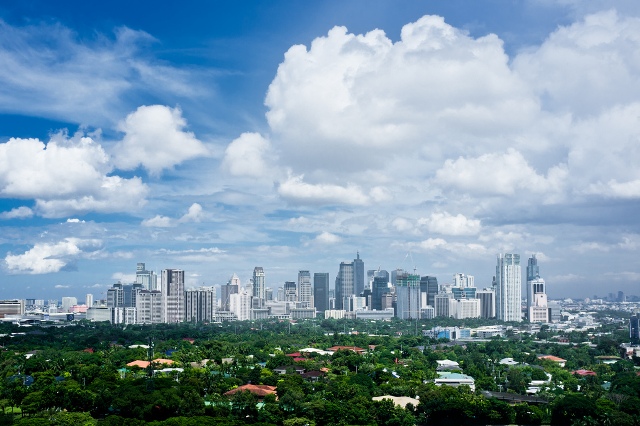Philippines: Economy seen to grow at least 7%
MANILA, Philippines — An economic growth of at least seven percent is possible for the Philippines this year as the new tax reform law takes effect and government’s aggressive infra spending program rolls out, top economists said yesterday.
Finance Undersecretary Gil Beltran said a gross domestic product (GDP) growth of at least seven percent is doable this year with the implementation of Republic Act 10963 or the Tax Reform for Acceleration and Inclusion (TRAIN) Law.
He said the first package of the Comprehensive Tax Reform Program should be complemented by the planned tariffication on rice and massive infrastructure projects under the ambitious Build Build Build program of the Duterte administration.
“Low inflation is an indication that the country’s macroeconomic fundamentals remain strong. Solid fundamentals backed by TRAIN 1 implementation, rice sector reform and the Build Build Build policy will push the country’s growth to seven to eight percent this year and sustain manageable inflation,” he said.
For its part, First Metro Investment Corp. (FMIC) said the domestic economy is expected to grow between seven to 7.5 percent this year, underpinned by strong private consumption as more disposable income are placed on the hands of a young population and higher government spending on infrastructure projects.
FMIC also expects the economy to have grown 6.9 percent in 2017, with the industry sector growing 8.5 percent and services growing at 6.8 percent. Inflation is expected to have settled at 3.2 percent.
Key officials of the investment banking arm of the Metrobank Group said a rebound in exports, stable OFW remittance inflows and BPO revenues, and the re-energizing of the tourism industry would also give GDP a boost this year.
“We expect the growth of the Philippine economy to accelerate this year. All engines of growth are up and running at a faster pace. The country’s economy will remain as the best performing in ASEAN, we are experiencing a demographic sweet spot that will continue to push consumption expenditure, there’s a revival in manufacturing, and the country’s external position is strong,” said FMIC president Francis Arjonillo during yesterday’s 2018 Economic and Capital Markets Briefing.
“With the recent passage of the TRAIN Law, the government’s Build Build Build program is anticipated to be full steam ahead, which will surely drive economic expansion further,” he added.
TRAIN lowers personal income taxes but imposes higher tax on fuel, automobiles, sugary beverages and tobacco. Revenues from the first package of the tax reform agenda would be used to fund the administration’s ambitious infrastructure program as well as social services that would blunt the effects of higher tax on consumer goods.
Combined with the expected rise in world oil prices this year, FMIC said this is expected to drive up inflation to a range of 3.5 to four percent this year. Officials, however, expect this would be manageable as it is still within the central bank’s target of two to four percent.
University of Asia and the Pacific economist Victor Abola said TRAIN would generally cause a 0.6 percent rise in domestic inflation this year. As the law is fully implemented in the coming years, inflation is seen to rise to between seven to eight percent by 2022.
With the expected surge in the consumption of goods and services alongside higher take-home pay, FMIC sees the industry sector growing at a faster pace of 8.7 percent in 2018 and the services sector at 7.1 percent.
Infrastructure spending as a percentage of the GDP is seen growing 6.1 percent this year from 5.3 percent last year. FMIC sees government spending in infrastructure rising to 7.4 percent of GDP by 2022.
“Infrastructure spending is crucial for faster growth this year,” he said.
On the external front, exports are expected to continue to grow in line with improvements in the global economy led by upticks in the US, European Union and japan — all of which are major traditional markets for Philippine goods.
FMIC said the peso will remain under pressure as the US economy continues to recover, leading to the strengthening of the dollar. Because of this, the local currency is expected to trade weaker at 52.50 against the dollar.
Abola said that while this would hurt imports, this would not cause a major problem for the economy as most imports are capital goods for manufacturing. A weaker peso is also beneficial to exports and domestic consumption because of huge OFW remittance inflows.
Source: http://www.philstar.com/business/2018/01/05/1774611/economy-seen-grow-least-7


 English
English




